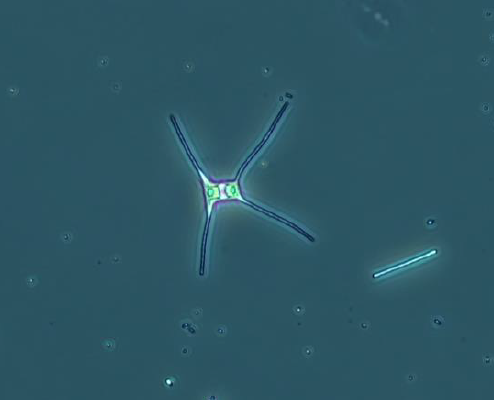Phytoplankton samples were collected on November 14, 2024 at Bullock Reach and analyzed in the laboratory shortly after collection.
It was partly sunny, windy and cold on this day. Sonde data was not recorded.
The qualitative tow net sample had a quick filtration time and the filtrate contained some light brown particulates and plant matter.
The analysis of the quantitative whole water sample revealed a total of 288,000 cells/L. The microflagellates were found at 30,000 cells/L. The most predominant phytoplankton genera were Chaetoceros spp. at 34,000 cells/L, Leptocylindrus spp. at 76,000 cells/L, and Heterocapsa spp. at 26,000 cells/L.

Staurastrum, shown here in a 200x phase contrast micrograph, is a large genus of microscopic green algae which are closely related to land plants. They are found in freshwater habitats around the world and live primarily in acidic lakes, ponds and swamps with low nutrient levels. Many Staurastrum species serve as indicators of eutrophic conditions.
